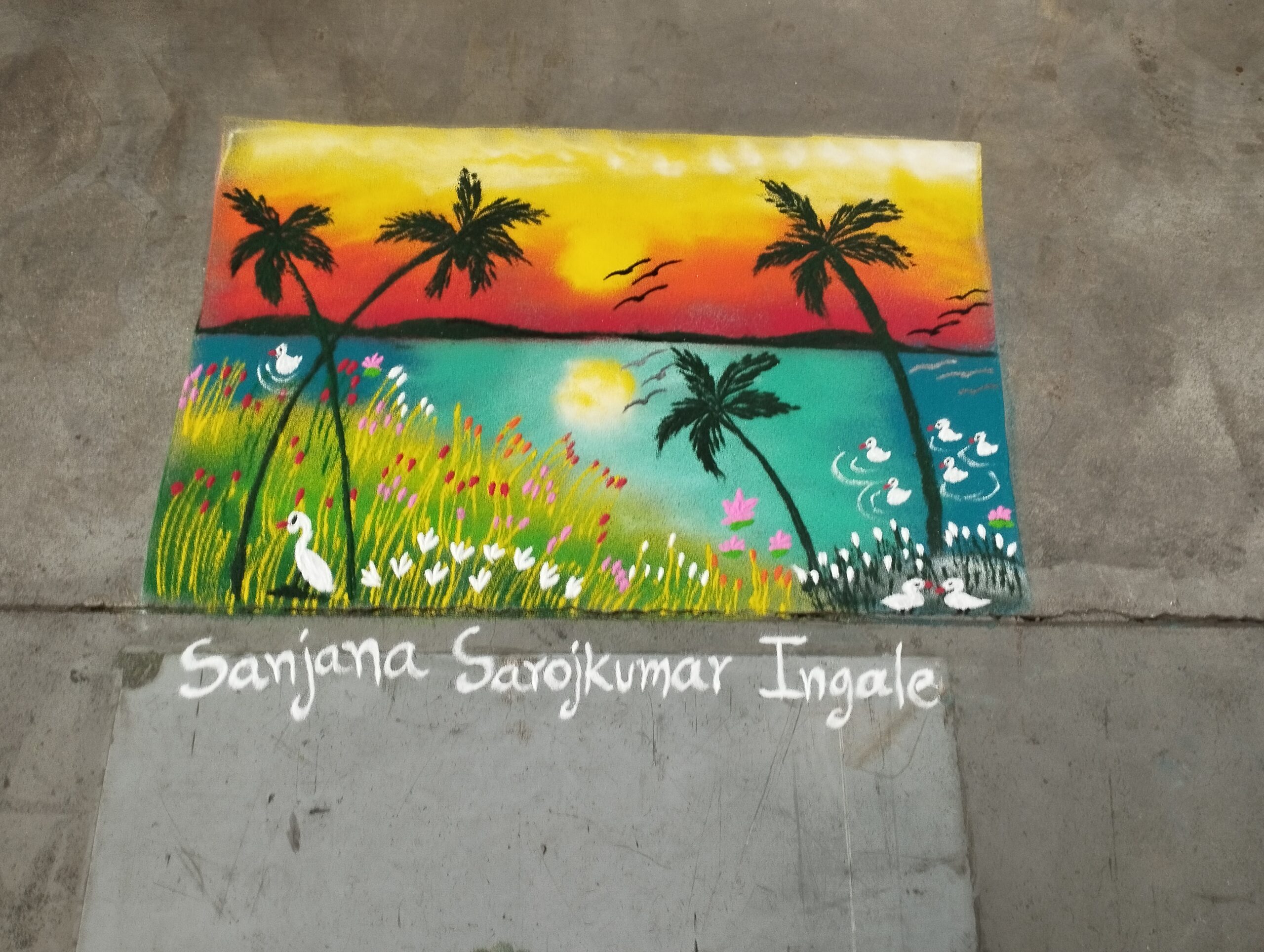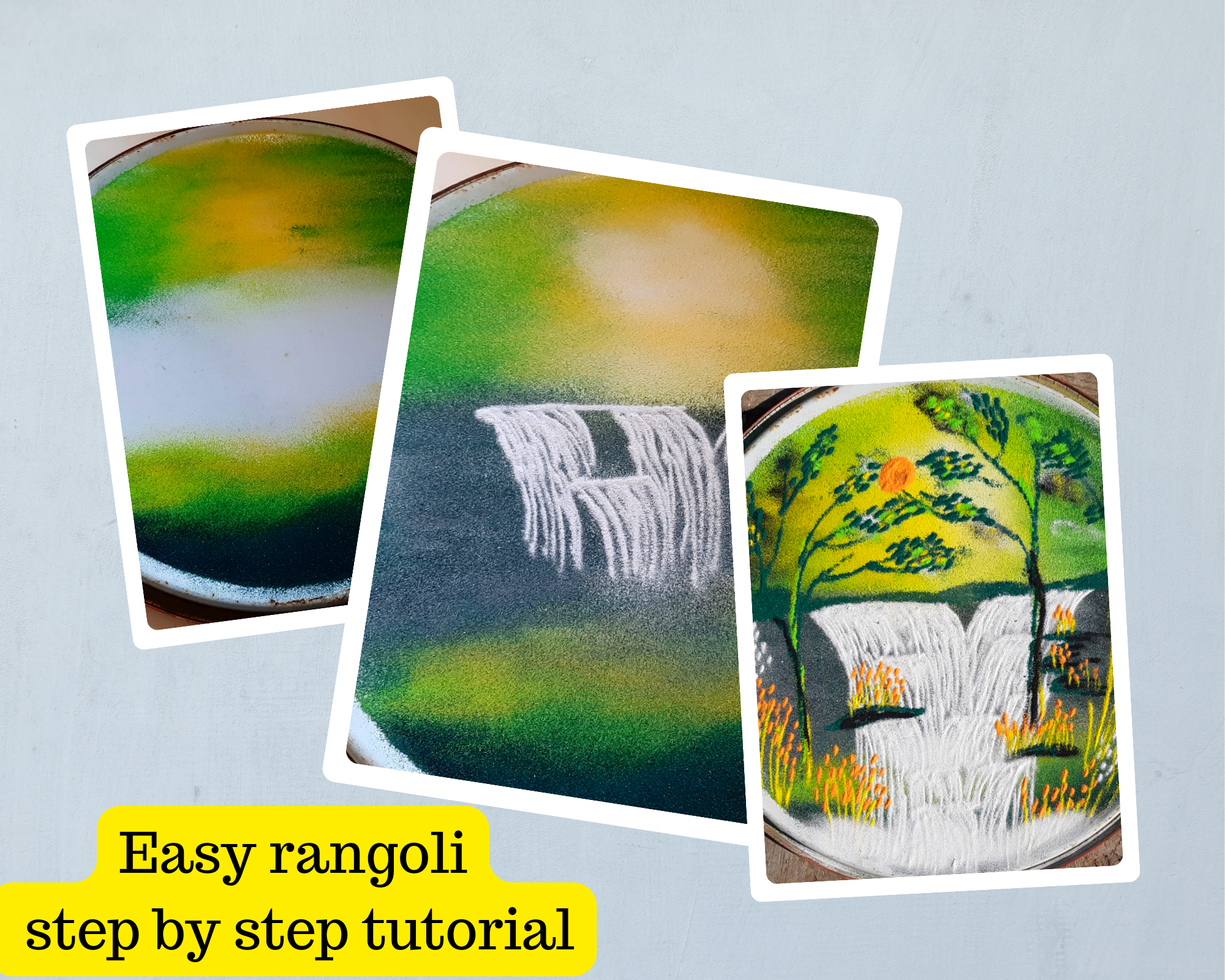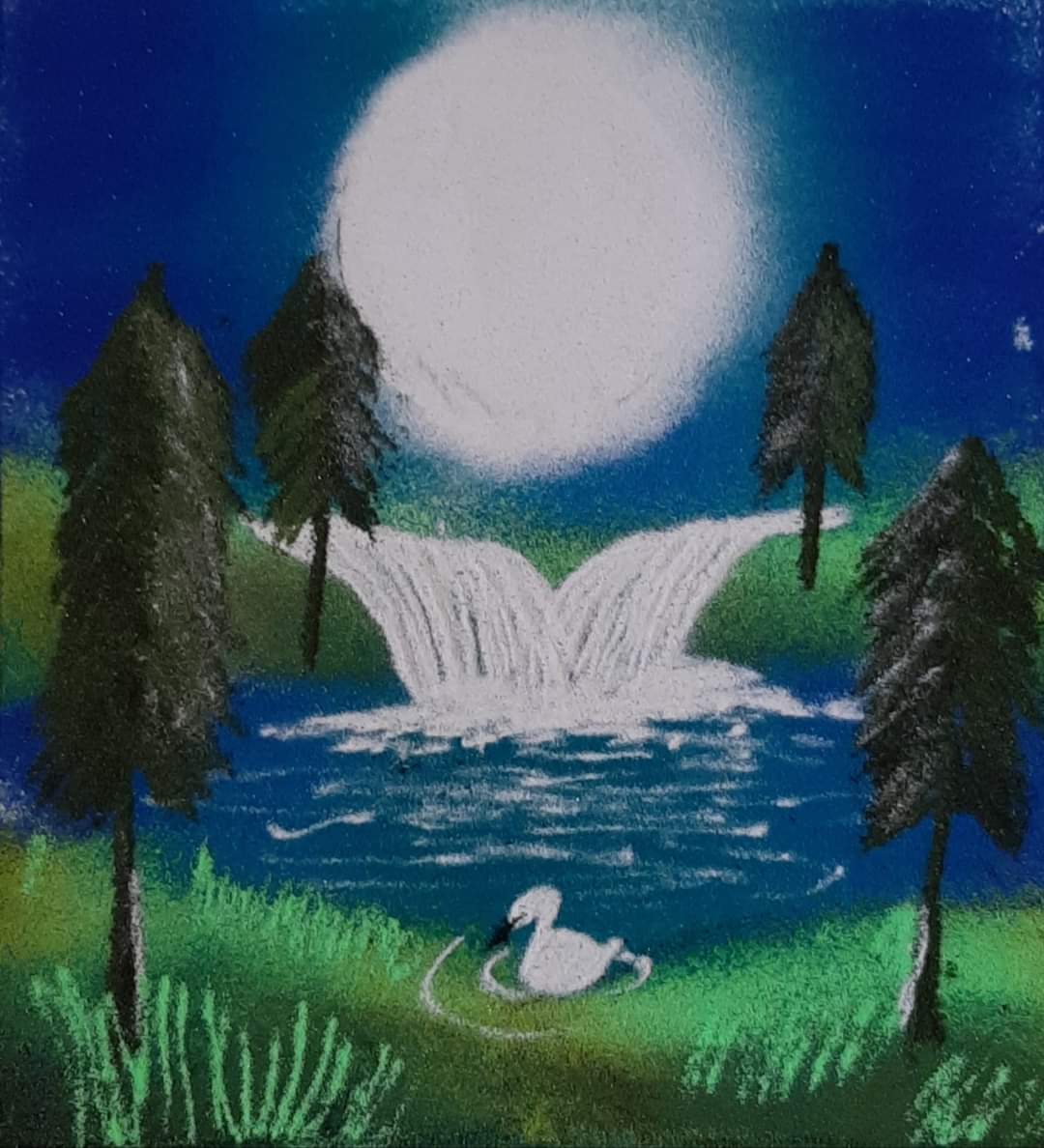Scenery Rangoli step by step
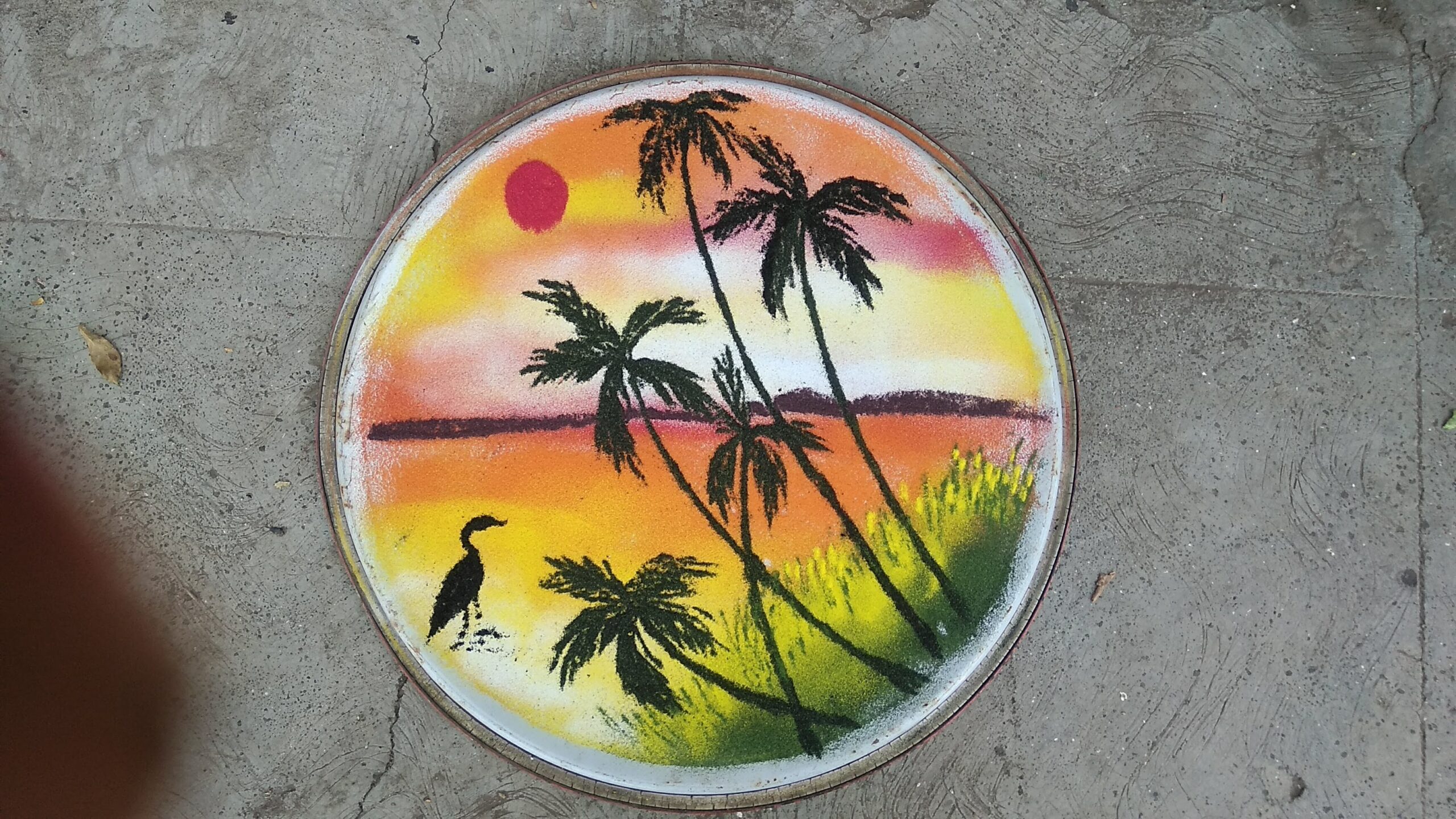
Scenery rangoli is my favourite and it looks attractive. Here is a step by step guide to draw a scenery rangoli.

Make 2 parts of entire base. Stroke the upper part with red color.

Add orange color into red, make that stroke above red color.
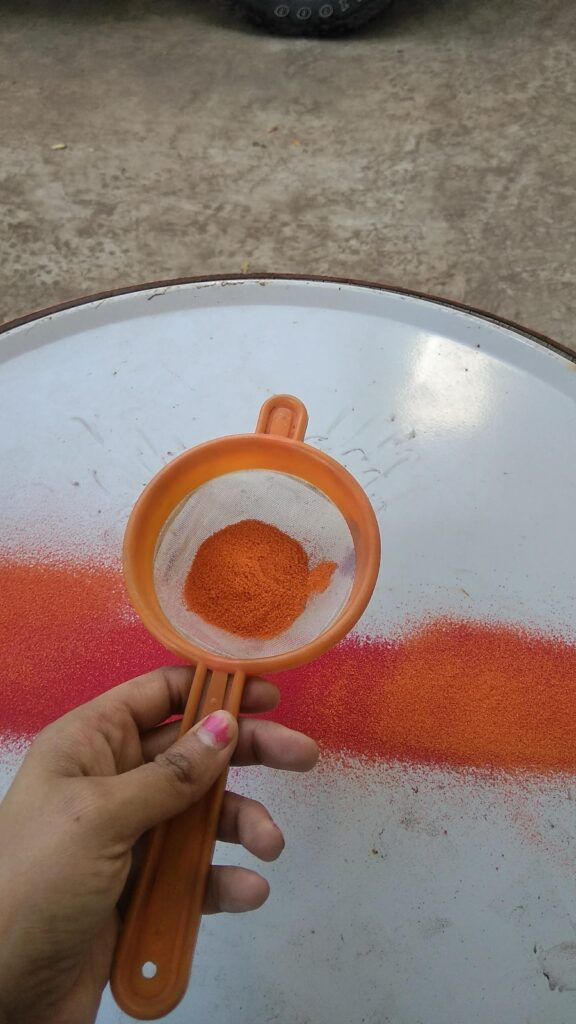
Remember the storke- Red, Red+Orange, Orange, Orange+Yellow, Yellow.
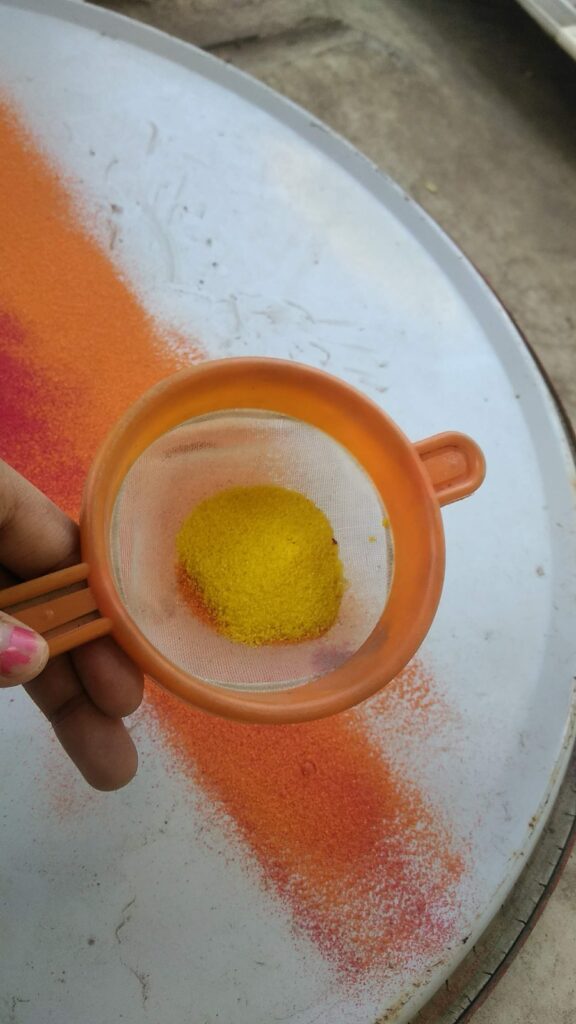
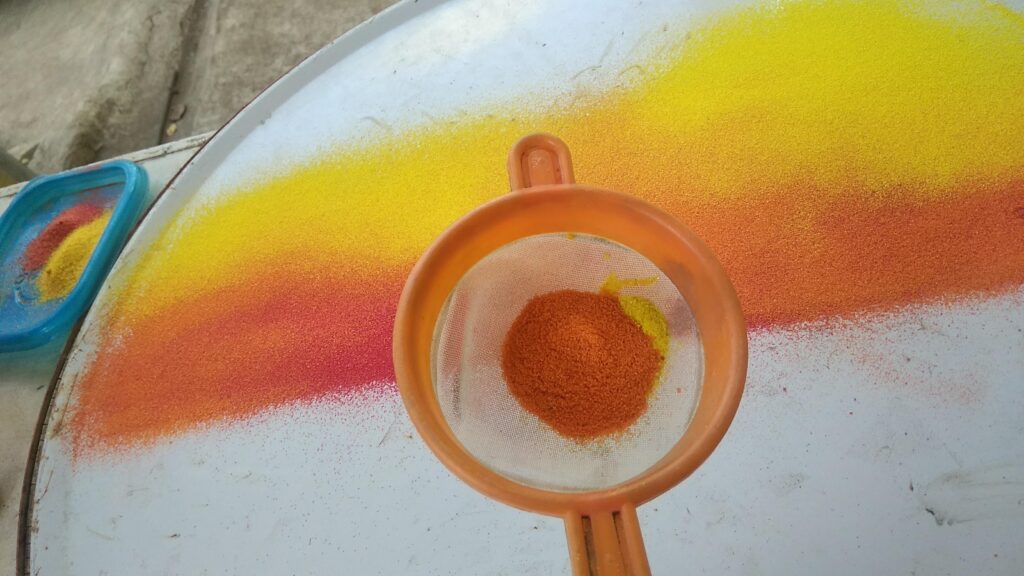
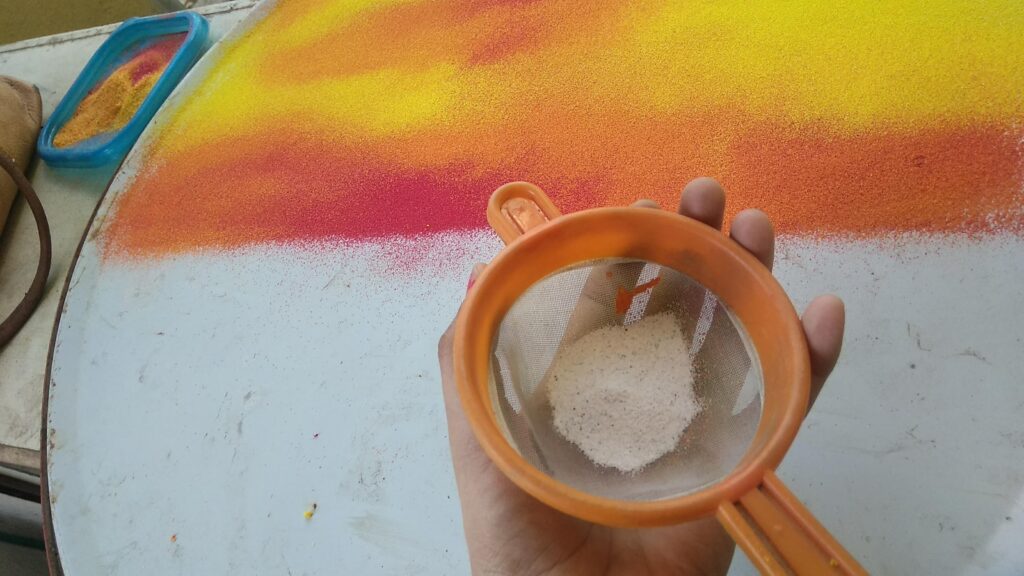
Take some white color in filter spoon, give white strokes in sky. Hold the filter spoon far above the base and move gently.
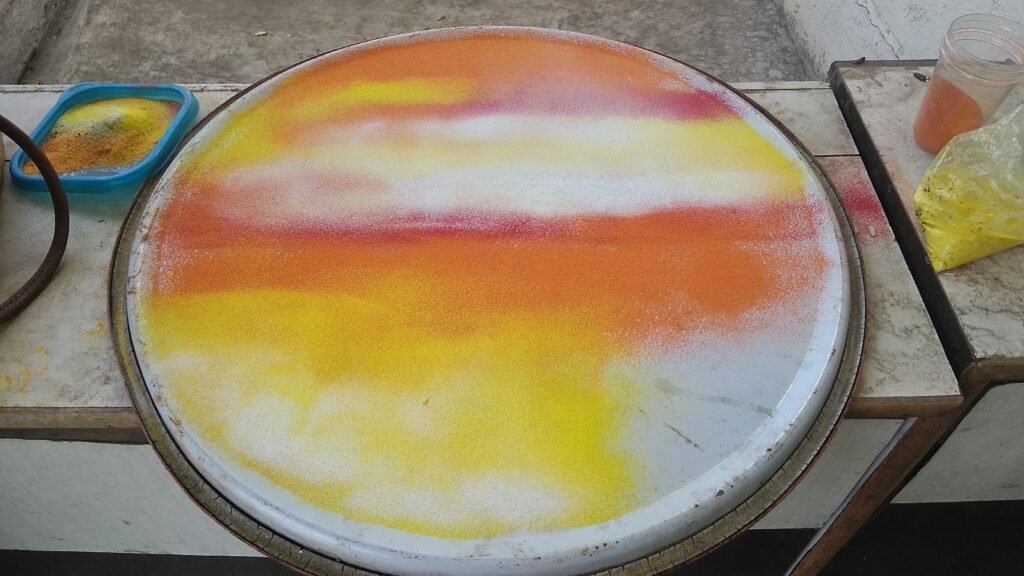
Give same shade in below part.

Take green and black color, mix it.

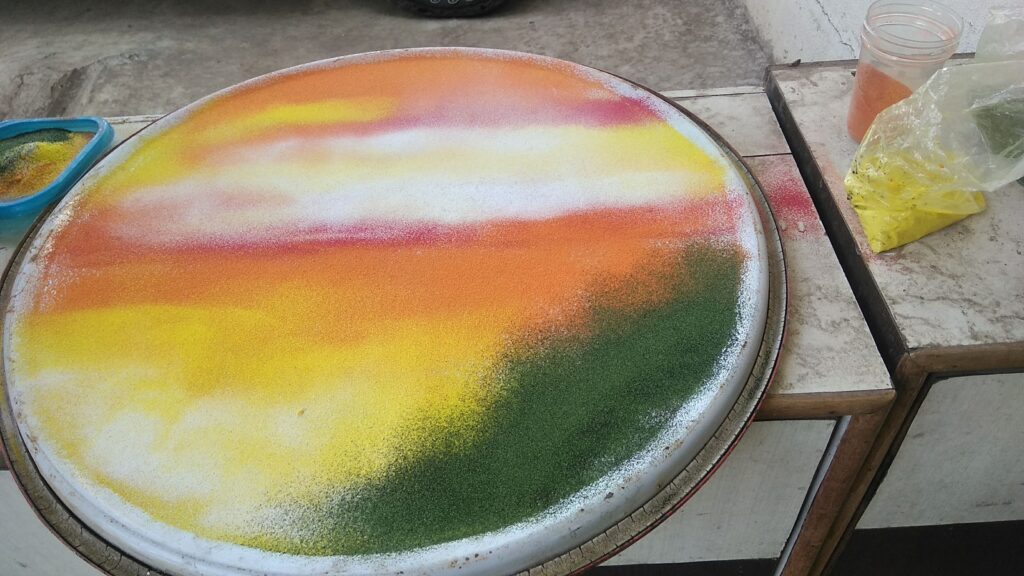
Yellow stroke above green and black part.
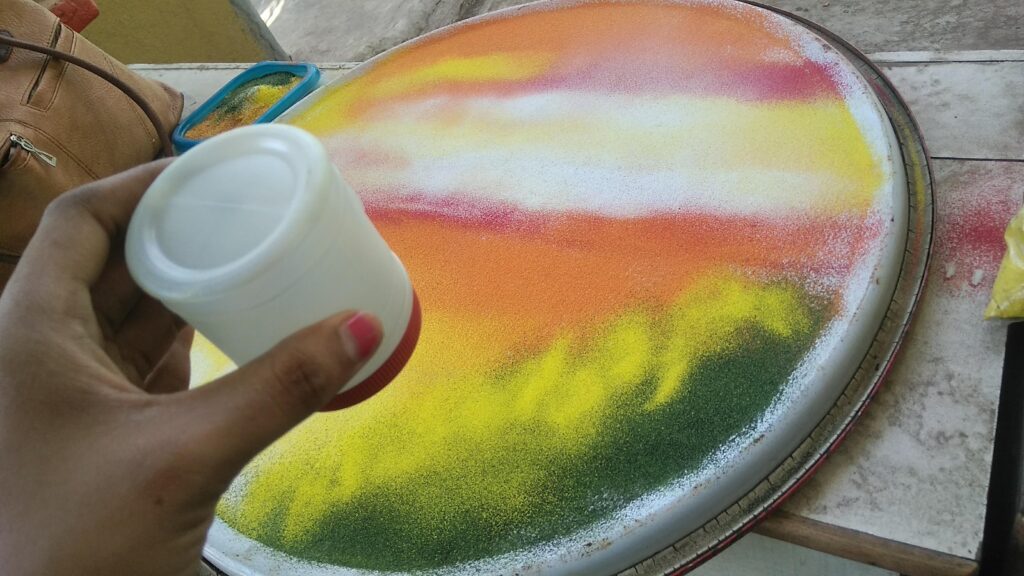
Coconut tree using same color.

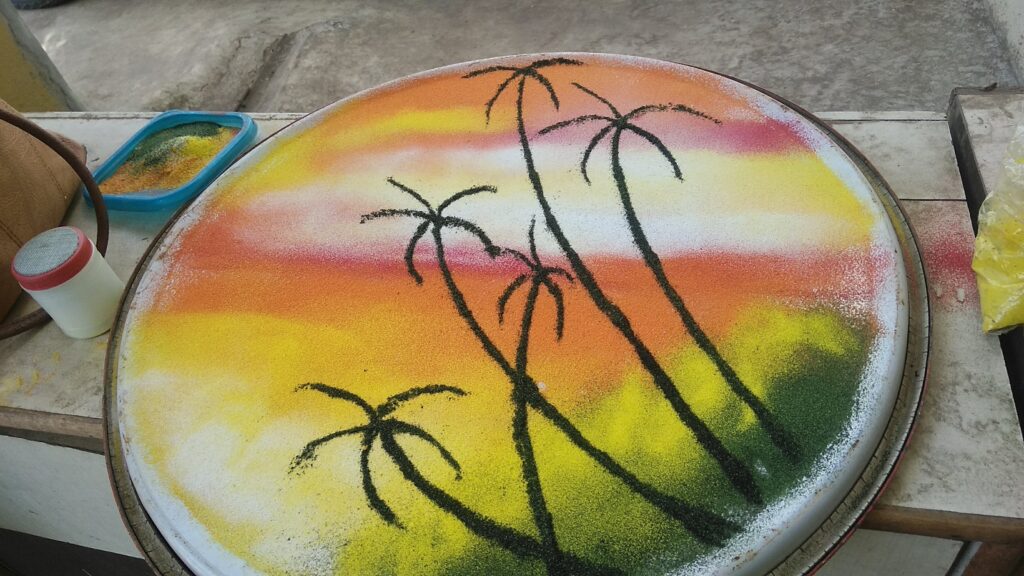
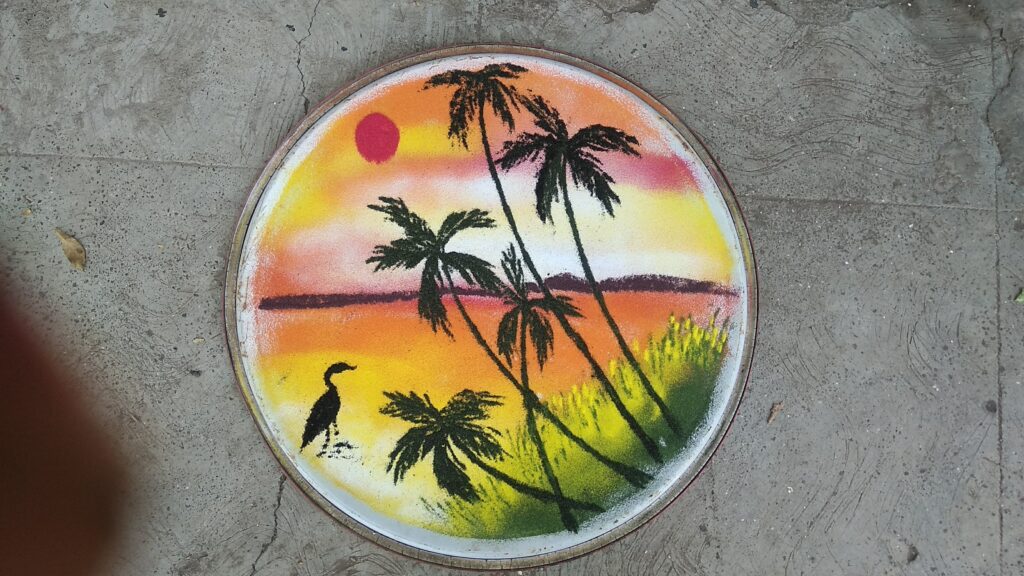
Rangoli, a traditional Indian art form, is not only a visual delight but also a creative expression of culture and beauty. Among the various forms of rangoli, scenery rangoli stands out as a mesmerizing depiction of nature’s splendor. In this article, we will explore the enchanting world of scenery rangoli and provide a step-by-step guide to creating your own masterpiece. With the help of the website “Easy Rangoli Designs,” we will unlock the secrets of this artistic journey.
- Understanding Scenery Rangoli: Explain the concept of scenery rangoli and its significance. Discuss how it allows artists to portray landscapes, natural elements, and even specific scenes from mythology or everyday life. Highlight the versatility of scenery rangoli in capturing the beauty and serenity of nature.
- Exploring the Website: Introduce the website “Easy Rangoli Designs” and its comprehensive collection of step-by-step tutorials on creating scenery rangoli. Discuss the user-friendly interface, well-organized categories, and the wide range of design options available. Emphasize the website’s usefulness in guiding beginners and inspiring experienced rangoli artists.
- Gathering Materials: Outline the essential materials needed to create a scenery rangoli. Mention items such as colored powders, stencils, rangoli tools, and reference images for inspiration. Provide tips on sourcing materials and exploring various color options to bring your vision to life.
- Step-by-Step Process: Divide the creation process into clear steps and guide readers through each stage. Explain how to prepare the base, sketch the outline, and fill in the colors gradually. Emphasize the importance of patience, precision, and attention to detail. Reference specific tutorials from the website to illustrate each step effectively.
- Enhancing the Design: Discuss techniques for adding depth and dimension to the scenery rangoli. Explore shading, blending colors, and incorporating intricate patterns to bring the elements of the scene to life. Provide tips on creating texture, highlighting focal points, and using different materials like flower petals or decorative elements.
- Finishing Touches and Maintenance: Explain the importance of cleaning the surroundings, removing excess powder or debris, and adding final touches to enhance the overall look of the scenery rangoli. Provide tips on preserving the rangoli, such as using fixatives or taking photographs to capture the artwork’s beauty and memories.
- Sharing and Showcasing: Encourage readers to share their creations on social media platforms, online communities, or the “Easy Rangoli Designs” website. Discuss the joy of connecting with fellow rangoli enthusiasts, exchanging ideas, and receiving feedback. Highlight the potential for personal growth and recognition through showcasing artwork.
Creating a scenery rangoli is an immersive and rewarding experience that allows artists to weave their creativity with the enchantment of nature. With the help of the “Easy Rangoli Designs” website, anyone can embark on this artistic journey step-by-step. Whether you are a beginner or an experienced artist, the website serves as a valuable resource to unlock the beauty of scenery rangoli. So, gather your materials, unleash your imagination, and let the magic of nature unfold on your canvas.
Drawing nature has always held a profound significance in the realm of art. From capturing landscapes to intricate botanical illustrations, the act of portraying nature on canvas or paper offers a myriad of benefits beyond aesthetic appreciation. In this article, we will explore the significance of drawing nature and how it provides a unique and enriching experience for artists and viewers alike.
- Connecting with the Natural World: Drawing nature allows artists to establish a deep connection with the natural world. It provides an opportunity to observe and appreciate the intricacies of landscapes, plants, animals, and the ever-changing elements. This connection fosters a sense of mindfulness, grounding individuals in the present moment and fostering a deeper appreciation for the beauty that surrounds us.
- Cultivating Observation and Attention to Detail: Drawing nature necessitates keen observation skills. Artists must closely examine textures, shapes, colors, and patterns in order to capture the essence of their subject accurately. This practice enhances attention to detail, honing the ability to perceive subtleties in the natural world that might otherwise go unnoticed.
- Developing Patience and Perseverance: Nature drawing often requires time and patience. The intricate details found in leaves, petals, and landscapes can be challenging to reproduce accurately. Artists must invest time in observing and rendering these details, teaching them the virtues of patience and perseverance. This practice extends beyond the artistic realm and cultivates these valuable qualities in various aspects of life.
- Expressing Emotional Connection: Drawing nature provides a platform for artists to express their emotional connection with the natural world. It allows them to convey a sense of awe, tranquility, or even the power and dynamism of nature through their artwork. This emotional connection evokes a similar response in viewers, fostering a deeper appreciation for the beauty and majesty of the natural environment.
- Environmental Awareness and Conservation: Drawing nature can serve as a medium to raise awareness about environmental issues and promote conservation efforts. By capturing the beauty of landscapes, flora, and fauna, artists can inspire others to develop a greater sense of responsibility towards the preservation of the natural world. Nature drawings can serve as a poignant reminder of the need to protect and cherish our environment.
- Healing and Stress Relief: Engaging in the act of drawing nature has been found to have therapeutic benefits. It provides a meditative and calming experience, reducing stress and anxiety. The serene and harmonious qualities of nature can have a soothing effect on the mind and body, promoting overall well-being.
- Inspiring Creativity and Imagination: The diversity and complexity of nature’s forms serve as a wellspring of inspiration for artistic creativity. Drawing nature encourages artists to explore and experiment with different techniques, styles, and mediums. It fuels the imagination and opens up new avenues for artistic expression.
Drawing nature is an enriching and significant endeavor that transcends mere artistic practice. It allows artists to connect with the natural world, nurture observation skills, cultivate patience, and express emotional connections. Nature drawings also hold the potential to raise environmental awareness, provide therapeutic benefits, and inspire creativity. So, pick up your sketchbook, step into the embrace of nature, and let your artistic journey unfold in harmony with the beauty of the world around us.

